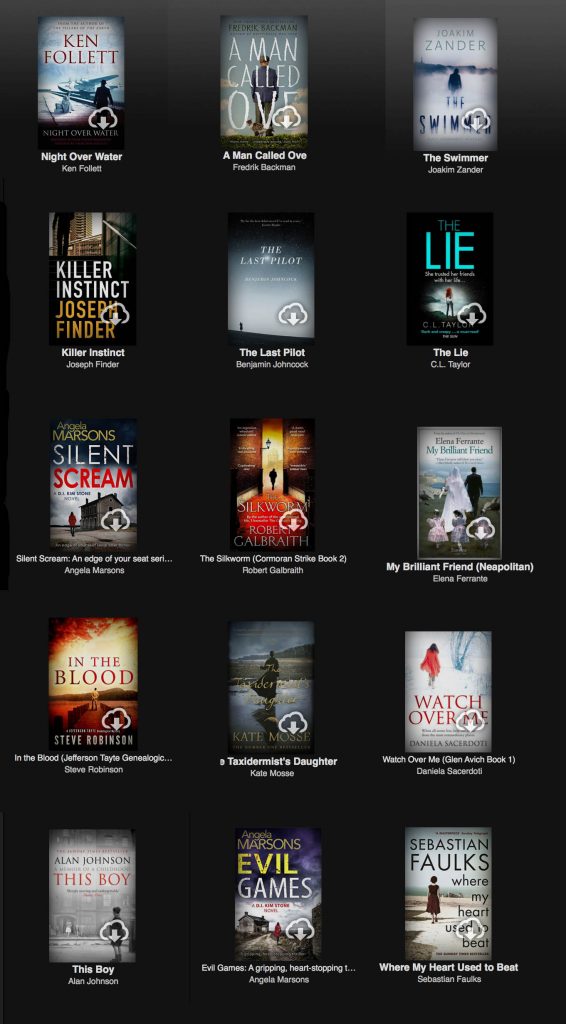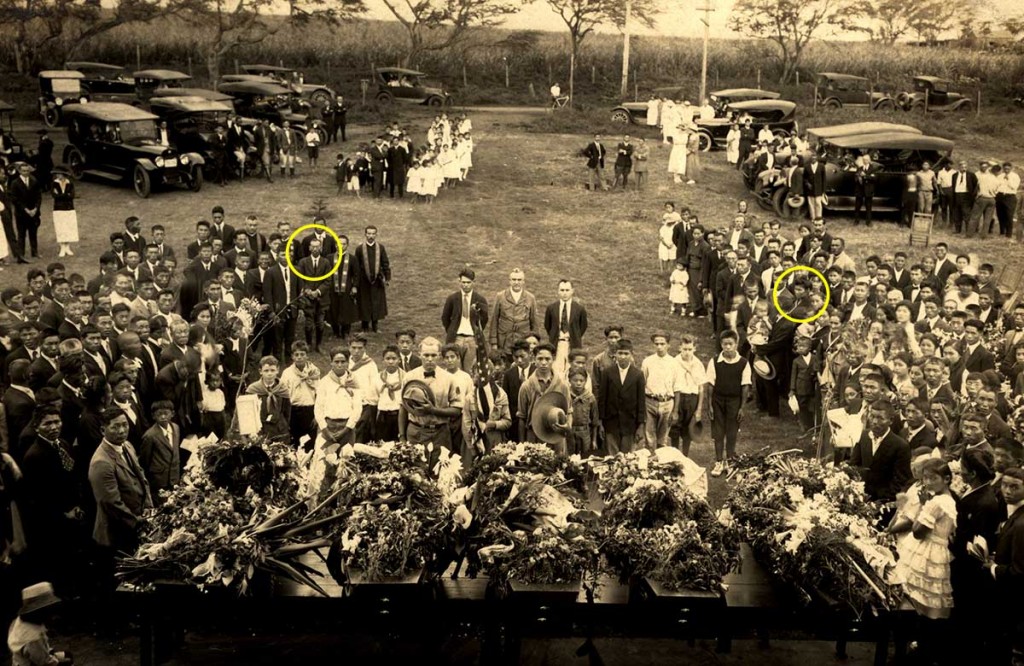Account Number & Sort Code — An Awful Warning
March 27th, 2017by Gwyn Headley
Managing Director
Tags: account number, BBC, cheque details, Getty Images, HSBC, Jeremy Clarkson, sort code
Paying by bank transfer is much easier than paying by cheque, which is why so many companies now include their bank details — account number and sort code — on their invoices.
That’s reasonable when the recipient is a private individual or another company. It’s not so good when they are published on the fifth biggest website in the country.
To illustrate an article “Bank cheques to be cleared within a day” on their website last Wednesday the BBC used a photograph of a handwritten HSBC cheque, clearly showing a company’s account number and sort code details.
The trouble was they were ours — fotoLibra.com’s.
This was a cheque we’d paid to one of our contributors in 2012, and to add aggravation to outrage she photographed it and uploaded it to Getty Images, who then sold it to the BBC, complete with our clearly visible bank details.

A photograph of a fotoLibra contributor’s cheque, sold to the BBC by Getty. We have blurred out our bank sort code and account number
James Cliffe, HSBC’s Head of Business Banking, is no call centre drudge and he took the issue sufficiently seriously to call me direct. HSBC had seen the article shortly after it appeared and immediately called the BBC to complain. The photograph was replaced within the hour.
An account number and sort code is all an unscrupulous individual needs to set up a standing order or direct debit, as Jeremy Clarkson found to his cost when he published his bank details in the belief they only worked one way. He found he was suddenly paying out a £500 direct debit to the charity Diabetes UK.
Clarkson revealed his account numbers after rubbishing the furore over the theft of 25 million people’s personal details. He wanted to prove the story was a fuss about nothing. “The bank cannot find out who did this because of the Data Protection Act and they cannot stop it from happening again,” sighed Clarkson. “I was wrong and I have been punished for my mistake.”
We hold the BBC and Getty Images equally responsible. We expect they know (Getty, that is) they’ve done wrong because there’s no trace of that image on their website today.
We still don’t know what damage we may suffer.
But if HSBC’s big guns are concerned, then we are concerned.
Tergiversation
February 13th, 2017Don’t know the word? Neither did I until I searched for a way to describe the way fotoLibra contributors preferred to photograph people.
Tergiversation means the literal turning of the back — that is, the tendency of most photographers to photograph people from behind, primarily because they don’t wish to cause offence or go through the tedious hassle of obtaining model releases.
I ranted and railed against this — and I Was Wrong.
There. I’ve said it. I admit it, and I apologise.
But I hedge my apology with numerous sub-clauses and conditions, provisos and reservations. In normal life PLEASE photograph people so we can see their faces, and if you seriously want to sell people photographs in this litigious world, you must get a model release. It’s as simple as that.
So why do I now say I was wrong to forbid photographs of people’s backs?
For the simple reason that it’s rare today to find a novel that doesn’t feature a photograph of someone’s back view on the cover. Have a look at these recent publications:
What’s the reason for this? Well, fashion as much as anything. Book publishers are ovine in behaviour — as soon as one of them gets a bestseller, others stumble over themselves to mimic the success story as closely as possible. Clearly there was a recent bestseller with a haunted, lonely figure on the cover, so now everyone else has piled in on the act.
Please note that these are not simply photographs of people from the back. They are solitary, anguished, haunted folk, struggling with inner and outer demons. And another reason is that they probably don’t require model releases!
So more of these please. Not group shots, just wild, mournful, tragic heroines. And the odd hero, of course.
I secretly wish that on the back covers we could see the front view of the haunted, lonely figure.
Tergiversation, by the way, in case you’re as interested in words as I am, has a darker meaning: the action of ‘turning one’s back on’, i.e. forsaking, something in which one was previously engaged, interested, or concerned; desertion or abandonment of a cause, party, etc.; apostasy, renegation. Also an instance of this; an act of desertion or apostasy.
Pricing and Human Nature
January 10th, 2017by Gwyn Headley
Managing Director
Every retailer knows that Price is King. People will always choose the cheapest option, and that’s perfectly understandable when it’s the same product.
If I see a litre of Famous Grouse for £20 in the Coöp, Sainsbury’s or Waitrose and there’s a litre of the Grouse for £15 in my local Londis, I’ll buy it there, thank you very much.
Of course there are exceptions. Louis Vuitton brand their luggage with a particularly plebeian design which is enthusiastically copied around the world. I imagine that less than 1% of the Louis Vuitton luggage you see is the real deal, unsurprisingly when the real bags are north of £5,000 and you can get a serviceable replica for £50. As my friend Jennifer says, Why pay less?
I have a friend who is so embarrassed by the big fat gold Rolex his wife bought him that he carries around the Watches of Switzerland receipt to prove to disbelieving friends that it’s real. We now have fun casting doubts on the authenticity of his receipt.
But images are different. You rarely see an image on fotoLibra which you can also see on Getty, Magnum, Corbis, Alamy etc., so comparing prices is much harder.
We’ll match or beat any price from any of the big picture libraries for the same usage and a similar deal. If you’re buying a photo from Getty Images for £10 it’s because you’ve agreed to buy 999 other images from them at the same price. We’ll happily match that. And you only need to commit to 99 images.
2017 has started well for fotoLibra. We’ve made a few big sales. But trickling on and on are the small purchases, people buying here and there for the same — always the same — reason: Editorial> Personal Use> One-Off.
The reason is that this is the cheapest easily discoverable price on fotoLibra. If you’re going to advertise your fizzy drink around the world, then you’d expect to pay big bucks to use one of our photographs. If you just want to print it off and stick it on your wall, then we’ve created a price just for you: Editorial> Personal Use> One-Off.
The snag is that some people will always choose the cheapest option they can find, even if it means not exactly telling the whole truth. So when they come across this bargain basement price they jump at it.
A year or so ago we saw a nice little earner. A lady had fallen in love with some of our photographs of English rivers. So much so that she bought 86 of them for herself; Editorial> Personal Use> One-Off. She put her address down as Interior Decorations Manager, Grande Hotel Splendide, Salford and paid with a corporate credit card. The Grande Hotel Splendide was just about to open an 86 bed hotel in Salford and we were struck by the coincidence.
We got in touch, and gently explained the situation, and to their credit the Grande Hotel Splendide forked out the correct price (which on a quantity deal wasn’t such a big difference).
The problem is that if we’re selling images online, we have to trust the buyer. Regular customers are no problem — they can download whatever they like and they account to us at the end of the month. But anyone can come along, register as a buyer, search the site for the cheapest price then buy a picture and walk away. It’s human nature, after all.
This doesn’t happen often enough to become a worry. But we’re aware of it, and we haven’t a clue how to police it. When it’s blatantly obvious then of course we’ll do some heavy chasing, but when M Zuckerberg of Dullsville, NE buys an image for $35 how do we know it’s NOT going to appear as a promotion for Facebook?
Any suggestions?
Oh — and a Happy New Year to you all!
Possible outage next week
September 30th, 2016That’s ‘Outage’, not ‘Outrage’. I’m outraged most of the time, so there’s no news there.
We’ve been informed by our data centre that they are having a problem which can only be solved by the complete replacement of a unit, rather than a repair. So they are beginning to follow the Volkswagen Franchises Dealer model of no longer being a garage, just a place that slots in replacement parts. They don’t repair things any more. I guess something might break down, and then they might get sued, so it’s all our fault really.
This is what our data centre tells us:
As you are aware it is our intention to entirely replace the unit which caused disruption to services this week. We have a plan in place that rather than work around a complete outage for all customers, instead a controlled migration of individual cabinets to new supplies will be conducted. This will reduce downtime for individual cabinets and allow engineers to respond to any individual issues should they arise.
Delivery and commissioning (including testing and verification) of the new device will take place over Wednesday/Thursday next week, with the migration of customer circuits to a clean supply occurring over the evening of Friday. Please note that these timings are approximate at this time and are still subject to change, however i wanted to give everyone a chance to have as much notice as possible prior to the work starting.
I will issue a further communication early next week confirming precise windows for the work to be completed in and also raise individual tickets with affected customers in order to arrange clean shutdown and restart procedures for devices.
Well, all that tells me is that there’s a vague chance we might be offline for a while late next week. fotoLibra hasn’t been affected by this problem as yet, and there’s no real reason to think we will, as we appear to be in a different sector, so this is just a heads up. If you come across fotoLibra behaving strangely, it should clear itself up within 24/48 hours.
Apologies in advance!
Real people
May 26th, 2016It’s hard to deal with real people. They smile, they laugh, they have fun, they have temper tantrums, they storm out of the room, they are unforgivably rude and then utterly contrite. They make no sense.
Sometimes they don’t do the work they’re employed to do. For no reason at all.
That’s why, when you send an email to, say, customer services or Support for a large organisation, you’ll get an email back almost the instant you click the Send button.
Now THAT’s customer service. No human involvement whatsoever.
fotoLibra only employs real people. It’s hell in here, folks.
Which is why we’ve always promised we will answer emails sent to Support within 24 hours (but give us a break at weekends).
Your support query will have been read by a human being and answered by a human being. If you haven’t heard back from us within 24 hours, there’s a simple reason: We Did Not Receive Your Email.
It happens. It happens more often than we would like. Just as letters used to go missing in the post, so emails can vanish into the ether. Sometimes it’s the fault of the spam checker at our email provider — which pulls out 400 junk emails a day from my account alone — and sometimes it just happens.
If you want to speed up our response time, put your Member ID in the subject line. (Hint: Sign in> Details> Member ID)
If you haven’t heard from us within 24 hours, send it again.
From one real person to another!
by Ella at Bob Books
The medium of photography has often become far too disposable, our pictures stored on digital platforms rather than in a format we can hold, pass around and display.
Bob Books was founded in order to solve the problem of the disappearance of this magical art form — allowing you to create your very own photo book. You can bring your memories to life: use your images and tell your story.
My favourite Bob Book this year, which won the Bob Books Photo Book of the Month competition in February, has got to be ‘Travels with My Father’ by Thomas North. Here, a son created a visual diary for his father of their travels to Australia and Japan. Their journey is moving and full of life as he captures both their surroundings and their bond, perfectly.
For the past 10 years Bob Books has established itself as the most well-loved and trusted platform for creating, printing and publishing photo books in the UK. Bob Books is used by countless professional and aspiring photographers, who understand that photographs can easily be transformed into keepsake objects with just a moment of inspiration.
As the UK’s top supplier of photographic paper photo books; our best-selling, lay-flat, photographic paper books are produced using a silver halide photographic process. Images are exposed onto 300gsm photographic paper and then developed through traditional chemical photographic processes. The pages are then bound using our unique lay-flat binding, displaying double page spreads at their best. Our product range includes hardback and paperback books and boasts a wide range of papers and finishes, all of the highest quality. We even offer logo-free printing for free.
Using the easy Bob designer software, PDF to book or simple drag-and-drop app for the iPad, Bob Books gives you the opportunity to make a customized, beautifully crafted photo book (suited to every design ability).
Once ordered, you can then choose for the book to be published in the Bob Bookshop, an exciting platform for people to share and sell their creations.
And now, Bob Books is offering a 15% discount to all fotoLibra customers!
Make the most of your collections of archival images or family photos and turn them into an object of beauty.
Wherever your passion lies, your pictures can tell a beautiful story.

African Fish Eagle in Flight
Take advantage of this today by visiting www.bobbooks.co.uk/fotolibra to quickly claim your discount and get started!
Picture credits: Selection of Bob Books © Bob Books | Bob Books spread © Bob Books | Galloping horse © Paul Richards / fotoLibra | Palmyra, Syria © Paul Gapper / fotoLibra | Krak des Chevaliers © Bernard O’Kane / fotoLibra | African Fish Eagle in Flight © Linda Wright / fotoLibra
Gwyn writes: Bob Books is owned by an old friend of mine who works to the highest possible standards. Give them a go — you won’t regret it. And if the pictures illustrating this guest blog look familiar, it’s because they’ve been chosen from the fotoLibra archive.
Elvis & Hirohito — the proof
April 1st, 2016by Gwyn Headley
Managing Director
Tags: Boy Scouts, Elvis Presley, Emperor Hirohito, funeral, Hawai'i
When we ask fotoLibra contributors to rummage through their attics to find old photographs that can never be taken again, this is what we hope they’ll come up with. FOT3028 is just an average, everyday shot of a mass funeral in Hawai’i.
It was taken by the grandfather of our next-door neighbour in London. He was a travelling organ builder, and this was taken from his organ loft at the funeral.
But look carefully at the yellow circles. What he wasn’t to know, and which has only later been uncovered by posterity and diligent research, is that this is the only known photograph showing Elvis Presley and the Emperor Hirohito of Japan in the same picture!
What a find. This will rewrite history.
London vs. Bradford
March 18th, 2016by Gwyn Headley
Managing Director
I’m London Welsh, fiercely proud of both Wales and London WGC*, but even I sometimes get the feeling that Great Britain Ltd pays a little bit too much attention to the Great Wen.
London Wasps play their rugby in Coventry, 100 miles from Charing Cross. When Yvonne was flying, she flew me into London Lydd, which is 80 miles from Charing Cross in the opposite direction. That is a BIG city.
Wouldn’t it be easier for all concerned if England was renamed London? Just a thought. After all, the rest of the world knows this sceptred isle as England, with not a thought for poor Wales or Scotland.
I was driving through Belgium last October when I heard a radio sports announcer previewing the forthcoming Belgium – England Davis Cup tennis tournament. I wondered how the Murray brothers would like that.
Where am I going with this? It’s the news that the Royal Photographical Society’s archive is to be moved, along with 400,000 other photography-related items, from the National Media Museum in Bradford to the V&A in London, to be replaced by a light show.
Whatever the merits or demerits of this move, we can be sure that the 400,000 objects out of the NMM’s 3 million strong collection being taken from Bradford will be the pick of the crop, leaving behind assorted knurled focussing knobs from a few old Thornton Pickards and a couple of Box Brownies.
When the NMM opened in 1983 it was called the National Museum of Photography, and it was hailed as a brave new initiative to devolve a part of Britain’s artistic heritage out of London. I worked with them on a number of projects, notably with Brian Coe and the Kodak Gallery (there’s a Harlech connection for you — Kodak’s first UK boss George Davison built his summer house in Harlech).
Now the best of the best is being shipped to London, which already has more and better museums, theatres, art galleries and entertainments than anywhere else in the world, leaving Bradford with a light show, an IMAX and a couple of curry houses.
As a proud Londoner, I say it’s simply not fair. We’ve got enough down here. Why do we have to have more? Make Bradford a destination for all photographers!
London’s got it all. It doesn’t need this. Bradford does need it. Please think again.
*World’s Greatest City
$ocial Media
March 15th, 2016by Gwyn Headley
Managing Director
Not being a great user of social media personally, I find it mildly offensive when people bump into me in the street because they’re too intent on reading their screens.
However when I was their age, I used to bump into people as I hurried down the street with my nose buried in a book — so where’s the difference?
The difference is that the boors who bump into me today are communicating with their own user-defined communities, which definitely does not include portly old gentlemen meandering down the street.
But as the great New Yorker cartoon by Peter Steiner pointed out, ‘On the Internet, nobody knows you’e a dog.’ So I don’t know if these hurrying, bustling, busy people might be picture editors, photographers, or any other members of a community which could be interested in fotoLibra, in the wonderful variety of images we hold, and in the great opportunities for reaching picture buyers around the world.
Shortly after we started up fotoLibra we approached what we recognised as social media blithely and without fear. We set up this fotoLibra Pro Blog, we set up Facebook and LinkedIn identities, we fed them with content and … not a lot happened. So we asked around, and people told us “Oh, you should be on
- Picasa
- Google +
- Tumblr
- Snapchat
- Flickr
and so on and so on and so on.
Keeping a visible profile on a dozen or or so social media sites (all American, of course) is hard maintenance for a small English-speaking (as opposed to American-speaking) business. In fact it’s almost a full-time job.
But it’s not impossible. So I started checking them out. The first one I looked at was Picasa.They closed it down today, Tuesday 15th March, after 13 years.
That would have been annoying, pumping thought and effort into something which has the cord yanked just as you get it up and running.
All these SocMed sites seem to follow the same pattern — smart young entrepreneurs start them up, they achieve quick success, a larger corporation buys them out, it doesn’t have the same drive and vision as the founders, the division lurches from new initiative to desperate new initiative until the enterprise is quietly remaindered. Whatever happened to Bebo? Myspace? They still exist, albeit as husks of their former selves. Friends Reunited? It was closed down 18 days ago.
When Facebook went public, 18% of the listed value of the company would buy you Belgravia. At the time, I commented I’d rather have Belgravia. Now more teenagers are signing up to Snapchat than Facebook, and who knows what they’ll be joining in 25 years time? Whereas Belgravia will still be there.
All this was partly prompted by coming across a New York photographer who started taking photos in 2008, now has 400,000 followers on Facebook and no, she doesn’t post naked selfies. I am lost in envy and admiration. My NYC chums have never heard of her. fotoLibra rather fewer followers on Facebook. Our challenge is to multiply ours a thousandfold.
Whether the SocMeds are on the rise, or in graceful decline, the more people who are aware of what fotoLibra offers, the better it will be for contributors, picture buyers and of course us.
We’re asking around again. Naturally, all advice will be gratefully received!
Eat Chocolate Now.
March 8th, 2016For over 40 years psychologist Merrill Elias and his team has been tracking the cognitive abilities of over 1,000 people in the north-eastern United States. The study basically observes the relationship between blood pressure and brain performance.
There have been seven waves of research so far, each one lasting five years, and in the sixth wave, 2001-06, Elias’s team decided to ask participants what they ate.
Researchers compared cognitive tests on participants who reported eating chocolate at least once a week with those who ate less.
The results were remarkable. The chocolate eaters had significantly superior visual-spatial memory and organisation, working memory, scanning and tracking, and abstract reasoning.
In other words, people who eat chocolate are better at multi-tasking, looking at things, remembering numbers and a host of other benefits.
“Our study definitely indicates the direction is that chocolate consumption affects cognitive ability,” says Elias.
It’s clear that if chocolate consumption enhances visual awareness, then photographers and picture editors should be bolting the stuff down.
We are well known in the picture business for handing out large bars of chocolate at trade fairs to picture editors in exchange for their business cards. It seems we were doing right all along.
Stand by therefore for the fotoLibra Enhanced Visual Perception Chocolate Bar, coming as soon as the highly qualified fotoLibra team has conducted extensive empirical research by scoffing as much chocolate as we can find.











